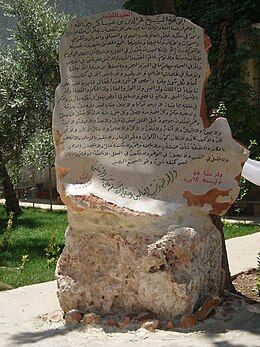Al-Nizamiyya of Baghdad
Appearance
| Part of a series on |
| Ash'arism |
|---|
 |
| Background |
Al-Nizamiyya of Baghdad (
In July 1091,
Imad ad-Din al-Isfahani
studied there in the late 12th century.
The Persian poet
Sack of Baghdad in 1258. He recalls clearly his days of studies at the al-Nizamiyya in Baghdad "A fellow-student at Nizamiah displayed malevolence towards me, and I informed my tutor, saying 'Whenever I give more proper answers than he the envious fellow becomes offended.' The professor replied 'The envy of thy friend is not agreeable to thee, but I know not who told thee that back-biting was commendable. If he seek perdition through the path of envy, thou wilt join him by the path of slander.'"[page needed
]
The
See also
- Abu Ishaq al-Shirazi
- Mustansiriya School, another Baghdad school, founded in 1233
- Madrasah
- Islamic Golden Age
References
- ^ Al-Ahram Weekly | Baghdad Supplement | They came to Baghdad : Its famous names Archived 2007-04-17 at the Wayback Machine
- ISBN 9798216104148.
- ISBN 9781491857649.
- ^ Youssef Al-Hazimari. "The biography of Imam Abu Ishaq al-Shirazi". Muhammadiya Association of Scholars (al-Rabita al-Muhammadiyya lil-'Ulamā' in Morocco). Archived from the original on 4 April 2024.
- ^ Ghazali
- Edinburgh University Press, 2001.
- ^ "Welcome | Religious Studies" (PDF).
- ISBN 9781445278254.
- ^ "Fastupdate sheet". www.ghazali.org. Retrieved 2017-09-13.
- ^ "Shahrastani". www.muslimphilosophy.com. Retrieved 18 March 2023.
- ^ B.G. Massialas & S.A. Jarrar (1987), "Conflicts in education in the Arab world: The present challenge", Arab Studies Quarterly: "Subjects such as history, mathematics, physical sciences, and music were added to the curriculum of Al-Nizamiyah at a later time."
Bibliography
- Makdisi, George: "Madrasa and University in the Middle Ages", Studia Islamica, No. 32 (1970), pp. 255–264
